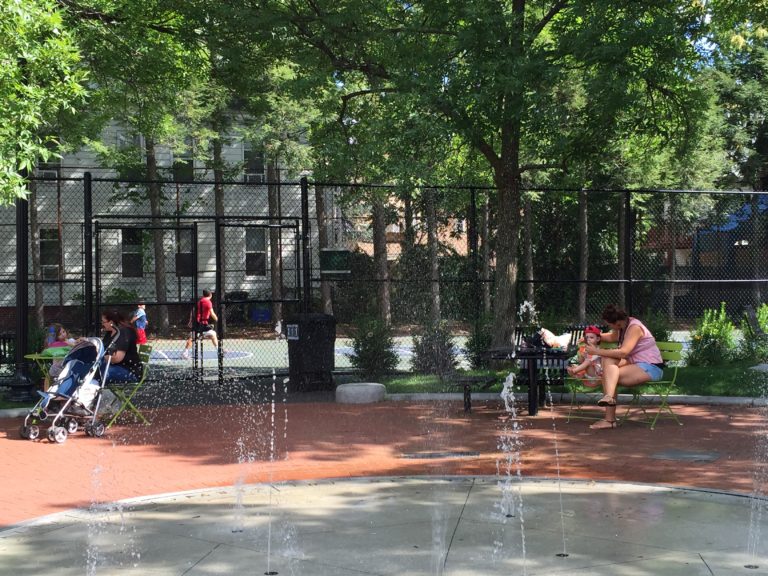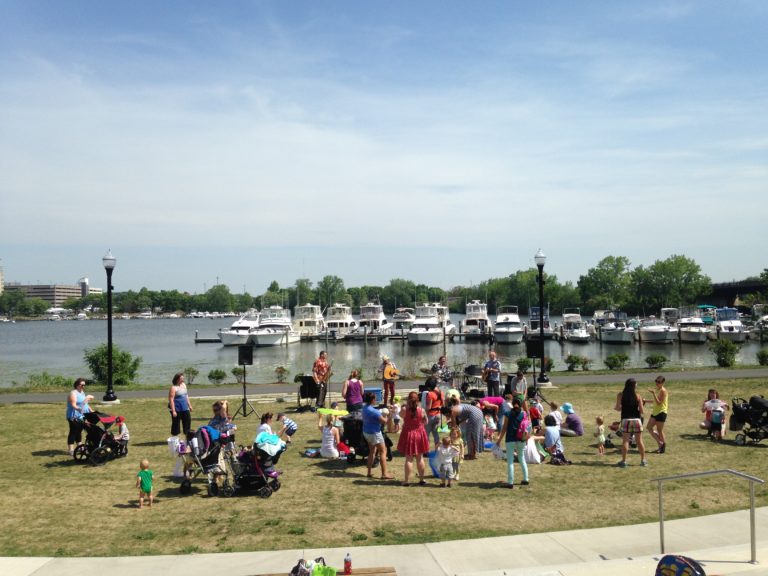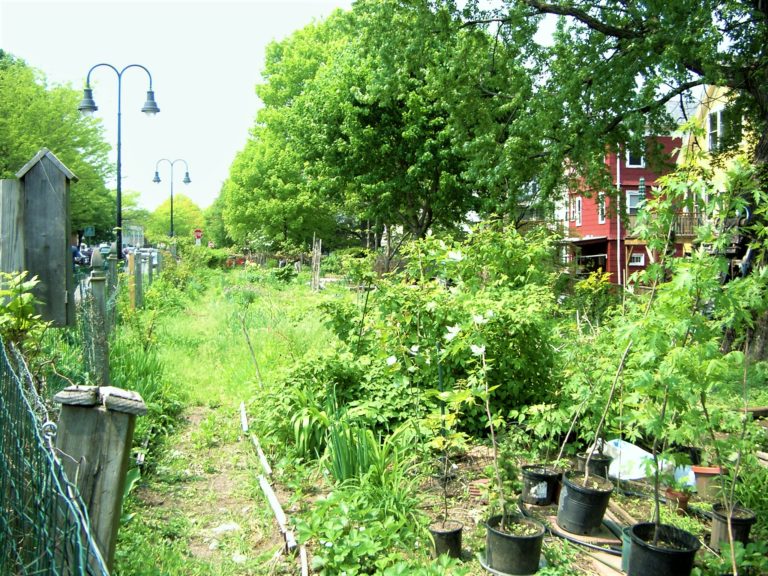SomerVision Number
in perpetuity by 2040
The scope for the Public Space and Natural Environment topic chapter is: Open and green space, community gardens, recreational space, trees, plants, support for pollinators, and community gathering places.
One topic that plays a role in many conversations about public space in Somerville is the material used in new parks. The working groups discussed the differences and pros and cons of both artificial turf and grass fields. A comprehensive plan won’t come to a conclusion as to whether one should always be used over the other because of the diverse roles our parks and green spaces play in our community. However, the decision about whether to use one or the other should be made on a project-by-project basis and informed by community discussion, expert research, and a thorough understanding of the project’s specific context.
STRENGTHS
SomerVision 2030 set an ambitious target of 125 new acres of usable open space. Since 2010, Somerville has created 15 acres of new open space and have 4 more acres in the pipeline. The Open Space Recreation Task Force Strategy memo also outlined planning towards 60 of those 125 new acres in the transformational areas. Access to parks is excellent in Somerville with 94.9% of residents within a five-minute walk (¼ mile) of an open space. In addition to adding acreage, the City has focused on renovating existing parks and schoolyards that are in the poorest condition. Twenty parks have been renovated since 2010 and most of the schoolyards either have been recently renovated or have planning grants to put this process in motion. Somerville has 1.3 miles of coastline on the Mystic River and Alewife Brook. In addition, the Somerville Community Preservation Commitee created a land acqusition fund. Although adding acreage takes time, the City has demonstrated a commitment to this goal. In November 2012, voters passed the Community Preservation Act, which funds affordable housing, historic preservation, and open space. With new development in our transformational areas, the potential to create more open space is possible through POPS (Privately Owned Public Spaces). The Open Space Creation Task Force released a memo in the summer 2019 identifying strategies and actions to create open space in Somerville.In addition to creating physical outdoor spaces, Somerville is home to several groups of engaged residents and organizations interested in advancing public space and the natural environment. Resident advocacy and affinity groups like Green & Open Somerville, Somerville Climate Action, the Climate Coalition of Somerville, the Friends of the Somerville Growing Center, the Somerville Garden Club as well as various youth athletic leagues and dog advocacy groups have organized residents and hosted actions from depaving parties to eliminate impervious surfaces to education campaigns about the invasive Black Swallow Wort. Independently, or in collaboration with groups, residents are excited to consider new ways to improve their neighborhoods. All elementary schools have school gardens and composting. Students learn to appreciate the natural world with programs in collaboration with Farms to School, Groundwork Somerville, Mass Audubon, Farrington Nature Linc, and Nature’s Classroom.
OPPORTUNITIES & CHALLENGES
Will Rogers was right when he said, “Buy land. They ain’t making any more of this stuff.” Somerville is 4 square miles and is not getting any bigger. When land is available, it’s costly, and the City must evaluate its use for all of our goals and priorities including affordable housing, commercial development, open space, and infrastructure, just to name a few. Privately Own Public Spaces (POPs) may shift some of the burden of acquiring and maintaining open space to private funding, which may allow the City to expand access to open space faster than if the City had to purchase land directly. However, since POPs are still private land, the City must craft guidelines and agreements to ensure that POPs are accessible to all residents and visitors to Somerville. The City leads community processes on new park or park renovation projects. This is a balancing act – satisfying the needs of the immediate neighborhood but also fulfilling citywide goals. For instance, Nunziato Field was identified as a place to improve stormwater management with infrastructure under the park. There was resistance by residential abutters because of concerns about impacts during construction and project costs. This plays out in different ways on each project, resulting in the need for the City to communicate citywide planning decisions at the hyper-local level. Public spaces come in many different sizes, shapes, and forms, from passive parks to playgrounds to plazas. Different public space forms can have unspoken rules and perceptions about appropriate use, such as the perception that parks with playgrounds are only for children and passive parks are only for adults. Design (or redesign as necessary), activation from activities, signage, and public information campaigns can inform that all people are welcome in Somerville and that’s also true in our community spaces. Our existing parks and open spaces are well used and are designed to be increasingly more sophisticated – especially as parks become working landscapes delivering ecoservices. For many locations, maintenance is an ongoing challenge. Current City efforts focus on acquisition and/or complete renovation of public spaces but they must also consider strategic upgrades and routine maintenance. A failure to address maintenance means that new parks quickly look overgrown and rundown. Users can call 311 to log maintenance issues but that doesn’t address some of the larger problems. Additional attention from City planning and maintenance staff, as well as investing in training, could allow upkeep specific to each park. Many times, the efforts of low impact development and environmental stewardship are not carried through the lifetime of the park. Thinking broadly about public space allows for the inclusion of streets and sidewalks. Somerville right-of-ways contain roughly 605 acres. There’s more opportunity for the public realm to be a part of our gathering and natural and green environment instead of a concrete and asphalt place for cars. The City has increased spending on tree plantings but the trees face a tough physical environment and public perception is not always positive. People voice concerns about tree roots, leaves, allergies, and even species. This is an opportunity to expand access and connect our public spaces using programs like neighborways and green corridors. The largest park in Somerville, Foss Park, is practically inaccessible from the nearby neighborhoods of East Somerville, Ten Hills, and Assembly because of the McGrath Highway and I-93. The largest challenge is likely that the majority of land in Somerville is privately-owned. The City has limited ability to tell private landowners what to do with their land unless significant changes are proposed. Just as the City evaluates the use of land for our shared goals and priorities, each property owner is doing the same. Parking, gardening, storage, landscaping, patios, porches, and decks are all common elements of a Somerville yard. Property owners vary in their ability to improve property and keep it maintained. Perception of these types of spaces is also varied. While some see a beautiful vegetable garden, others see a habitat for rodents or are concerned about soil contamination.
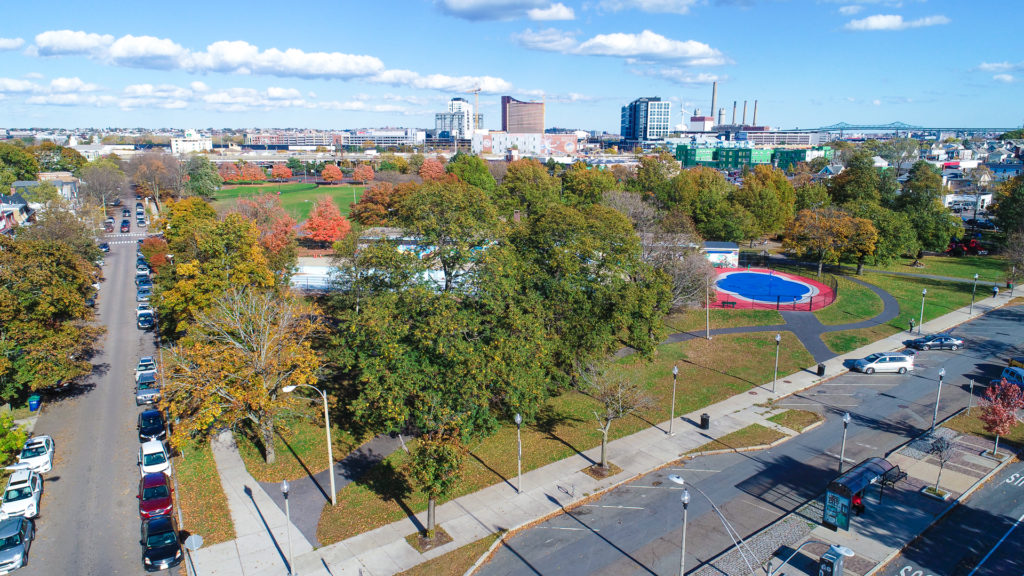
Native species are uniquelyadapted to environments that mimic pre-contact conditions. When planted in appropriate locations, native species generally use fewer resources and contribute to an efficient and balanced ecosystem. When the conditions are right, native species may be able to grow easily once established, but whenconditions are not right they are often outcompeted by invasive species. One of the most important benefits of native species is that they create habitat for native birds, pollinators, and wildlife. In this way, native species are proven to increase and protect biodiversity.
The Public Space and Urban Forestry division has had asuccessful record of using many native species in appropriate locations in both our parks and streets and of creating landscapes that perform many ecological and sociological functions.
GOALS AND TAKEAWAYS
Engage the Somerville community. The majority of land in Somerville is privately-owned and almost half is residential. The SomerVision map calls to conserve our residential areas of one, two-, and three-family homes, but these areas help contribute to Somerville’s tree canopy, pervious surfaces, and natural landscapes.
Partner to expand outreach. Local community organizations and nonprofits have a wealth of information and passion for different topics related to public space and the natural environment that they could share with interested residents such as invasive species, native landscapes, certification programs, and depaving.
Expand use of private space. POPS are one way to expand our open space acreage. They should be indistinguishable from our public parks especially when it comes to access. POPS usually coincide with development but there may be assets in our existing neighborhoods that could benefit the community through an access agreement.
Expand options. Although it’s a regulation, the Urban Ag ordinance helped elevate the issue of urban agriculture to a community conversation and legalize residents’ interests and passions for growing their own food and keeping bees and chickens. Public space is often not open fields or playgrounds and our City should be open to unique ideas to expand our public space and natural environment.
Seek funding. Land is our finite resource and it is expensive. With land acquisition so expensive, the City should seek ways to increase funding for open space acquisition.
Innovate. We should look for cost effective paths to new open space including interim/temporary uses.
Keep planning. The Planning Staff should continue working towards open space goals in other city planning efforts.
Implement. Use systematic thinking that will make planning objectives a reality. Execution is the point. Rely on decades of city planning, research, and study to bridge from planning to execution. Acknowledge that each step takes time and avoid the temptation to repeat the cycle.
Identify. We need to continue to study and document the open space needs in Somerville because there are always new trends, user groups, etc.
Design. Although people may think parks have one use, such as a playground or playing field, there are many users in one space because generally people use open space that’s within easy access to their residence. Park designs should include elements for a wide variety of user.
EQUITY GOALS
Empower residents. The City designs and builds open spaces for the entire community. These are their spaces to play, relax, and congregate. People should feel empowered to enjoy them and improve them
Focus. The total acreage of open space is important, but so is access. Residents tend to enjoy open spaces within walking distance of their home. If parks are within walking distance, but separated by infrastructure like McGrath Highway or I-93, it is much less likely to be used.
Prioritize sustainability. Our parks and public realm are designed with climate and sustainability in mind, which sometimes can be at odds with maintenance concerns or design aesthetic. We need to prioritize sustainability in every public space.
Improve training. The City should evaluate if there are training and knowledge gaps to improve maintenance and permitted uses of the public realm.
Study structure. Park design, programming, and maintenance are in three different departments within the City of Somerville. This may produce a gap in knowledge or create problems in communication that should be reviewed.
Challenge assumptions. Known maintenance practices don’t necessarily mean that they are the easiest or most cost effective. We should consider landscapes wholistically.
Multi-faceted engagement. Our streets are also part of our public spaces. It’s common for people to focus on lanes of travel and bike facilities in streetscape projects, but these are also part of a public realm. We should work to encourage engagement from a variety of subject matter advocates in streetscape redesign projects.
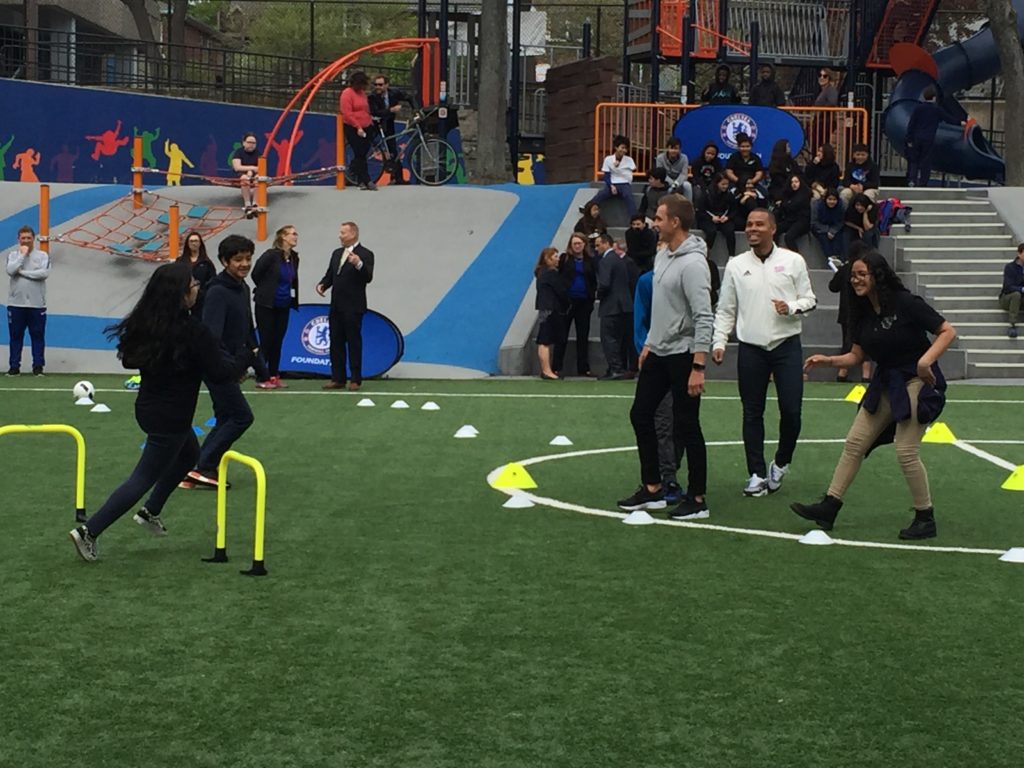
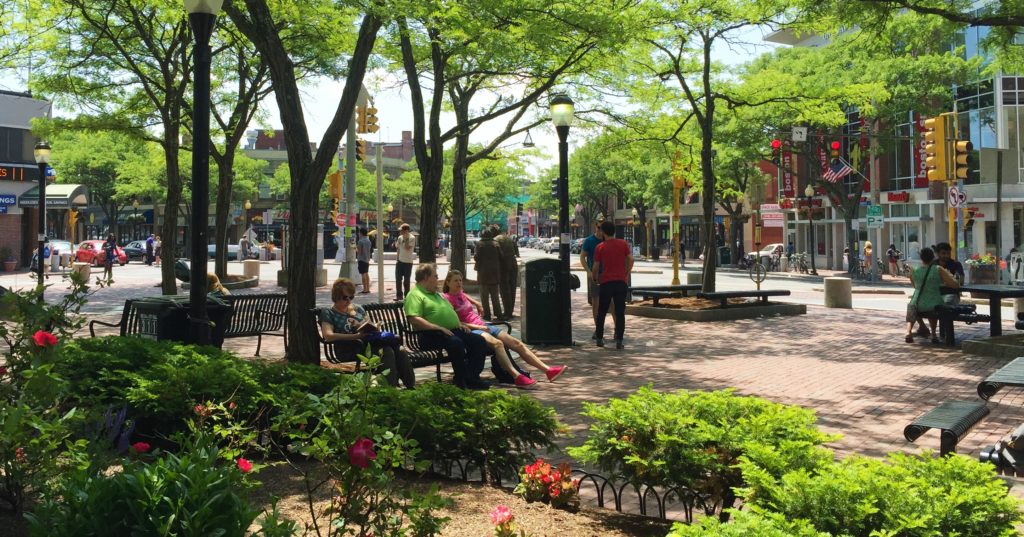
POTENTIAL TASKS
• Provide information online on what people can do to make positive impacts on Somerville’s natural environment and create feedback mechanisms such as comment boxes so that information can be updated and improved with resident and community group input.
• Create citywide programs to enhance goals building on the compost bin and rain barrel programs. Consider raised beds and native plantings.
• Waive permit dumpster fees for depaving projects.
• Educate renters on lease-friendly terms for yard usage.
• Review condo conversation to make sure new property owners will have access to outdoor space.
• Create an outreach strategy in collaboration with nonprofit and community organizations. Topics could include plant knowledge, invasive species, pollinators, soil health, etc.
• Study the feasibility of leasing or access easements for open space on privately-owned land.
• Expand learning opportunities for all ages.
• Expand the use of movable furniture in parks.
• Create standards and requirements for POPS.
Continue to update the Fields Plan.
• Create regulations and/or process for creating neighborways.
• Network with area foundations and corporations.
• Consider proposing an increase to the CPA surcharge.
• Evaluate whether a position within the City could engage residents on land donation/acquisition.
• Identify opportunities on city-owned land for temporary uses.
• Create an open space acquisition strategy that identifies target parcels.
• Continue to identify open space expansion in neighborhood planning.
• Create an Urban Forestry management plan.
• Expand park and public space signage with the intent of including multiple languages.
• Include welcoming language on all park signage for all people.
• Acquire open space strategically to close gaps so that everyone is within a five minute walk to open space. Analyze five minute walk by type, where appropriate.
• Similar to “safe route to schools” programs, study our open spaces to ensure they are accessible to pedestrians while minimizing barriers due to cars and street design.
• Continue making strides to implement the open space goals of adopted neighborhood plans.
• Expand GIS analysis of open space walksheds by type.
• Create framework to evaluate park design for all potential users.
• Create process where major renovations of parks are discussed with the Conservation Commission.
• Evaluate our community garden regulations. Both current and future community gardens should be assessed for fit for purpose, equity, and access.
• Consider community farms as an open space type.
• The City should first identify best practices for sustainability and access to open space, then identify any potential gaps in knowledge and seek additional training.
• The City should interview staff to identify knowledge and training gaps.
• Study the organization of similar mid-sized cities.
• Identify staff to liaise with community groups including ‘Friends of’ lists.
• Connect the SomerServe office with opportunities for volunteering in the parks.



